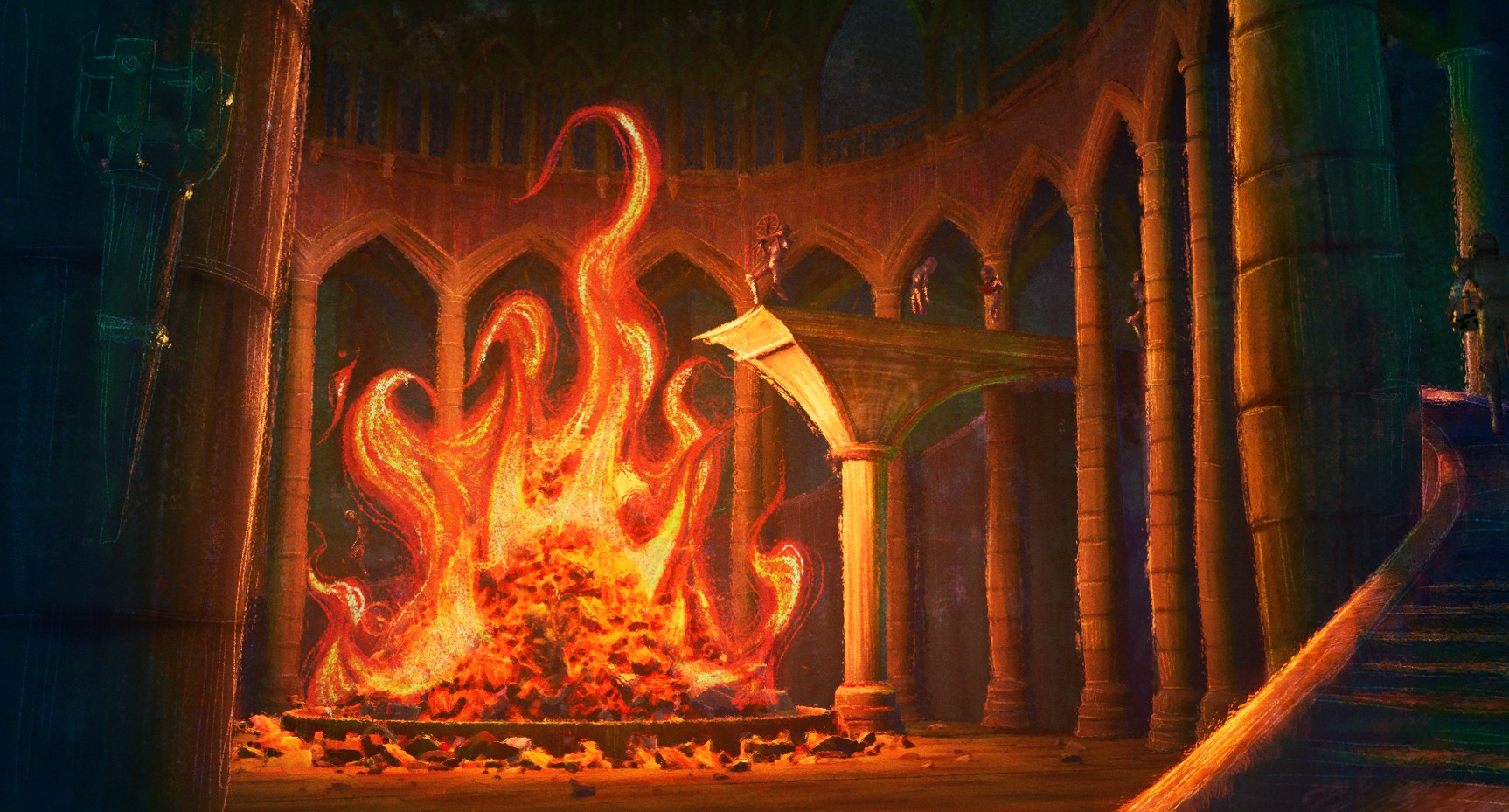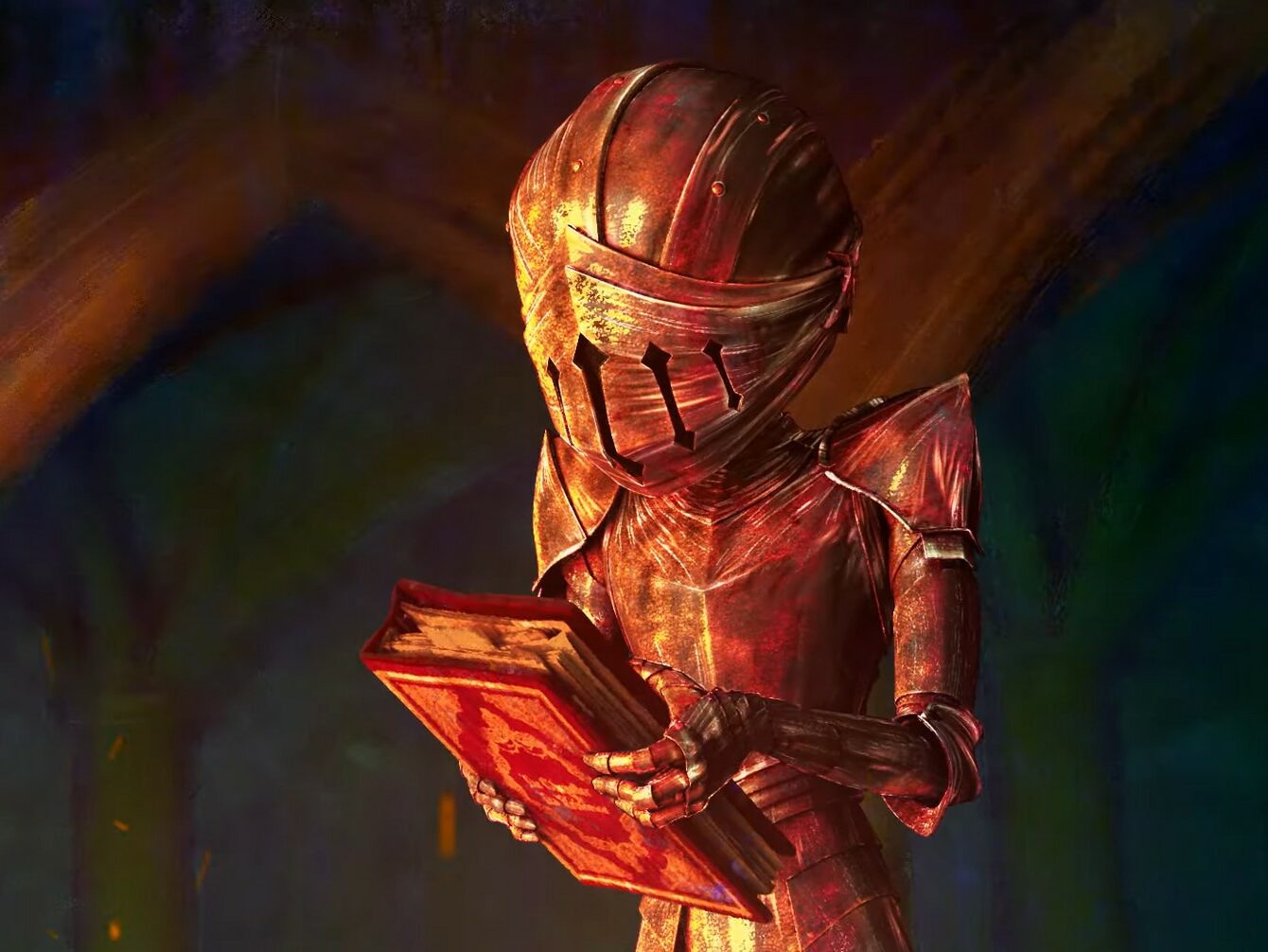A knight in a world of forbidden tales
These are the questions that run through this subtle short film, Le chevalier cape nuage, made by seven ESMA students and selected for numerous short film and animation festivals for young audiences.
In a world where fairy tales are forbidden, Nuage, a young knight, ignores his queen’s orders and saves an illustration.
Forced to flee in the face of the growing threat, the knight discovers the Land of Tales and heads for a distant tower similar to the one in the illustration he saved…
With Marine Gautier, Elise Hauton, Chanisse Langereau , Maé Murareci-Flaujat, Lucie Ouvrard, Fanon Rannou and Maya Van Cuyck, we invite you to discover the genesis of this project, behind the scenes and the many technical and artistic challenges faced by the team in bringing their film to fruition.
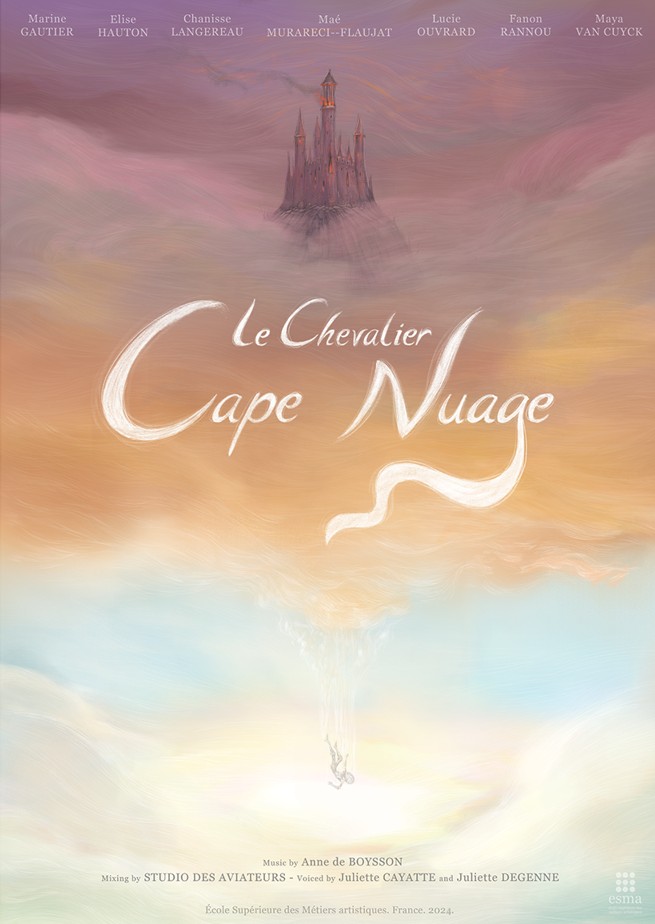
Can you tell us how the film came about?
Marine Gautier, who came up with the original idea, proposed this project to us.
When she was younger, she used to tell her family the story of a knight with a cape made of clouds who set off on an adventure in a tale of initiation.
An amnesiac knight in search of his identity thinks he has to save a princess to fulfil his destiny, only to realise that he himself is the princess who has been lied to.
This reflection on “what is a princess” and “what is a knight” served as a basis for tackling the themes of identity, emancipation and lies.
We developed Marine’s universe using the family theme to link these subjects, creating a mother/daughter relationship between the knight and the queen who had become overbearing and had ended up erasing the identity of her own child.
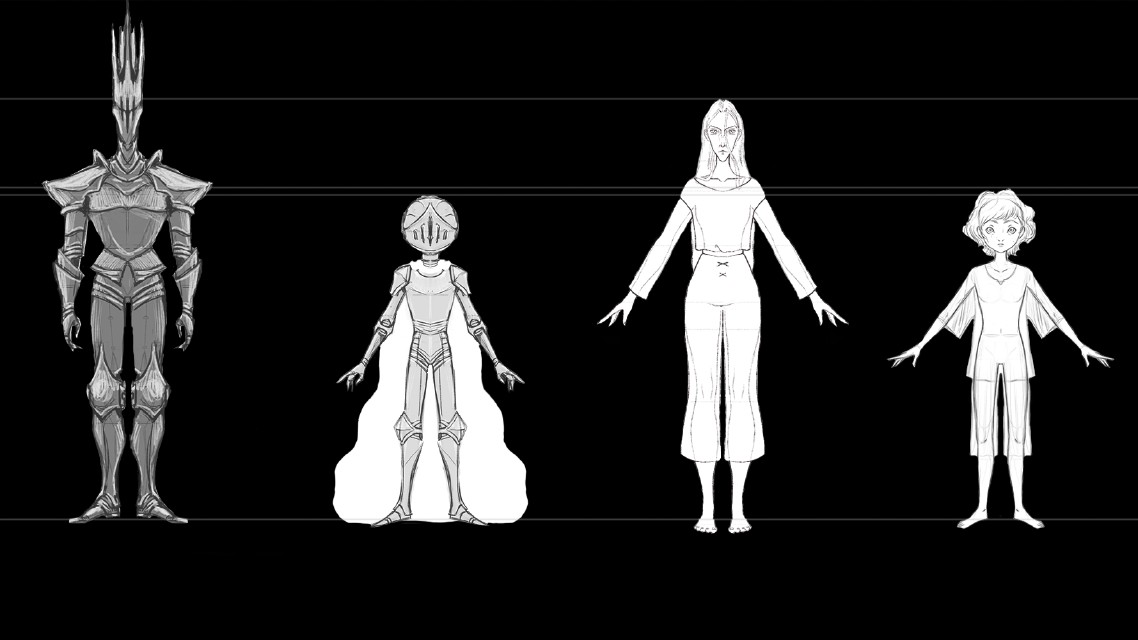
How did you go on to develop your project?
To pursue the project, we had to find motivations for the characters and a logic for this universe. We wanted to tell so many stories, but we had to make choices to meet the needs of a realistic production.
And we continued to make them throughout the process. The final plan itself was not yet finalised two months before the end of production, because we had disagreements about the final emotion we wanted to give the audience!
What guided you in your narrative or aesthetic choices?
The desire to reappropriate fairytales. We wanted to challenge gender norms and the stereotypes of “they lived happily ever after”.
In this sense, recent Disney creations very quickly came to mind, and we studied their way of modernising the stories a lot!
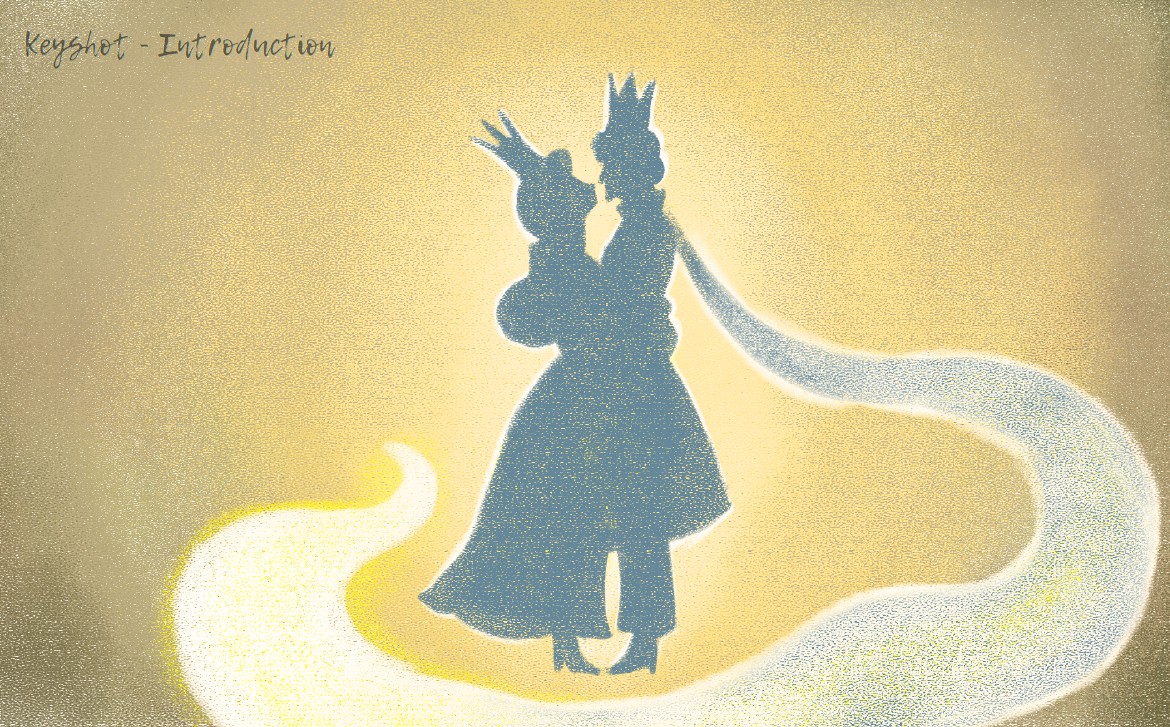
Some of their films, such as Rebelle, Sleeping Beauty and Encanto , were used as references for the conflictual dynamic between our protagonist and her mother.
We then developed our own story, always with the idea that each audience member could interpret the story according to the theme that resonated most with them.
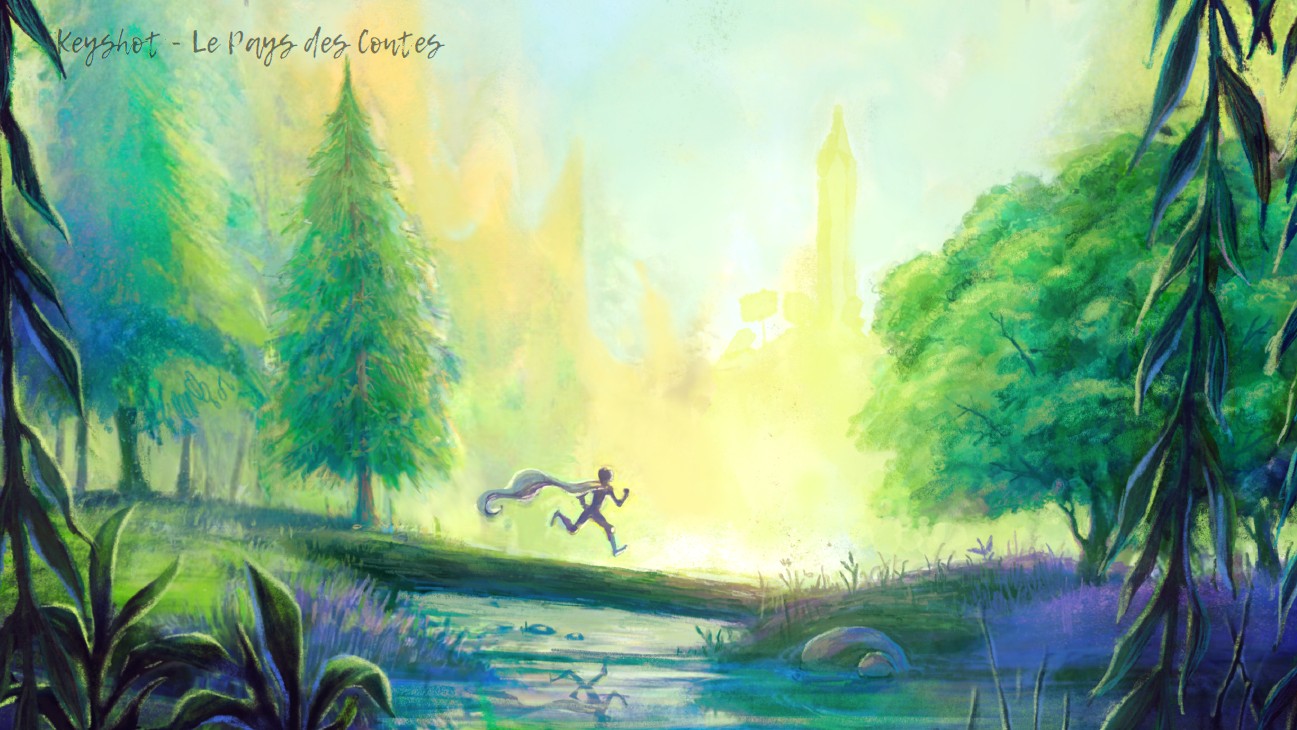
Visually, the film had to look like something straight out of a storybook, mixing 3D with traditional pencilled textures and watercolour effects.
Marine had already created several illustrations before the film went into production, inspired by Jeremy Paillotin.
The bright colours and elaborate compositions have guided us in our search for references and keyshots, as have the textures, with artists such as Chris Hong, Andrea Sio, Lorenzo Mattotti…
How did you design your main characters?
To give free rein to our creativity, each of the group’s designers tried their hand at silhouette tests and armour research, in both traditional and digital formats and in all graphic styles.
We regularly pooled our research to decide which sketches worked best and which didn’t, until we reached an expressive and recognisable semi-realistic base. Maya then took charge of the final designs.
His sketches evolved as he received feedback from the group and the teachers, and as the script and storyboard progressed, defining the characters’ personalities more and more clearly.
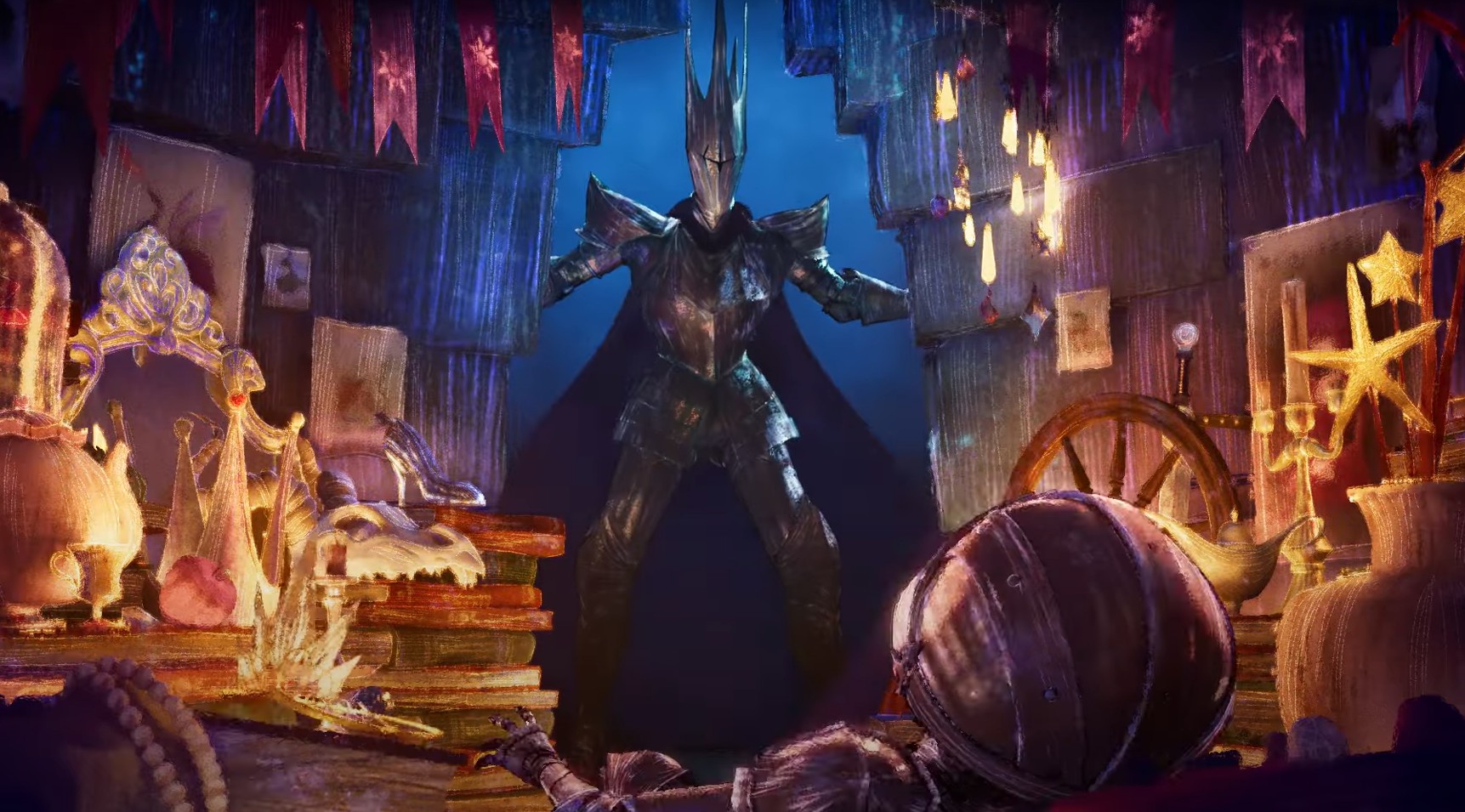
We couldn’t rely on their hidden faces, so we relied on the expressiveness of their bodies to bring out the character of each character and make them tangible.
From a narrative point of view, we had to find meaningful actions that would allow the viewer to identify with the characters in just five minutes.
To highlight the Queen’s pain and the harshness of the way she moves, and conversely to show Nuage’s desire for the world of fairy tales without showing any sparkle in her eyes.
All without going overboard with cartoonish imagery that would run counter to our serious approach. A real challenge for the whole team.
And what about your world and the artistic direction of the film?
We wanted to draw inspiration from fairytales for the locations, while adding our own colourful vision. Our characters had to evolve in places that are emblematic of fairytales, such as the castle, the enchanted forest and the princess’s tower, while using these codes to serve our purpose: the resplendent castle thus became a dystopian, neglected castle, revealing only the fire and coldness of a place that is much less alive than before.
It’s only in places of hope like Nuage’s hiding place and the outside of the castle that softer colours like yellow, pink and purple, reminiscent of fairytale dreams and enchantment, appear.
We return to this palette after an interlude of freedom in the forest. In the tower, our intention was to reveal a place steeped in history, but which would also mark the end of a quest for our main character.
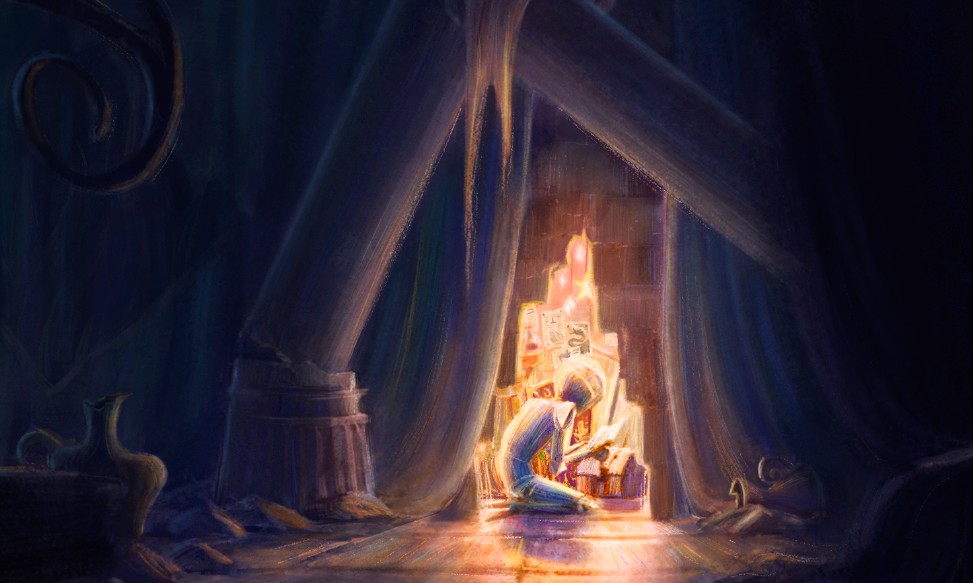
The atmosphere is ethereal, vaporous; we wanted to capture a time that has passed, that is gone. The change in colour in the tower, from dusk to night, reflects the end of an arc, the end of a relationship.
The graphic universe, as we said earlier, is linked to the representation of iconic places but also to the desire to reference fairy tales, with illustrations similar to those by Gustave Doré.
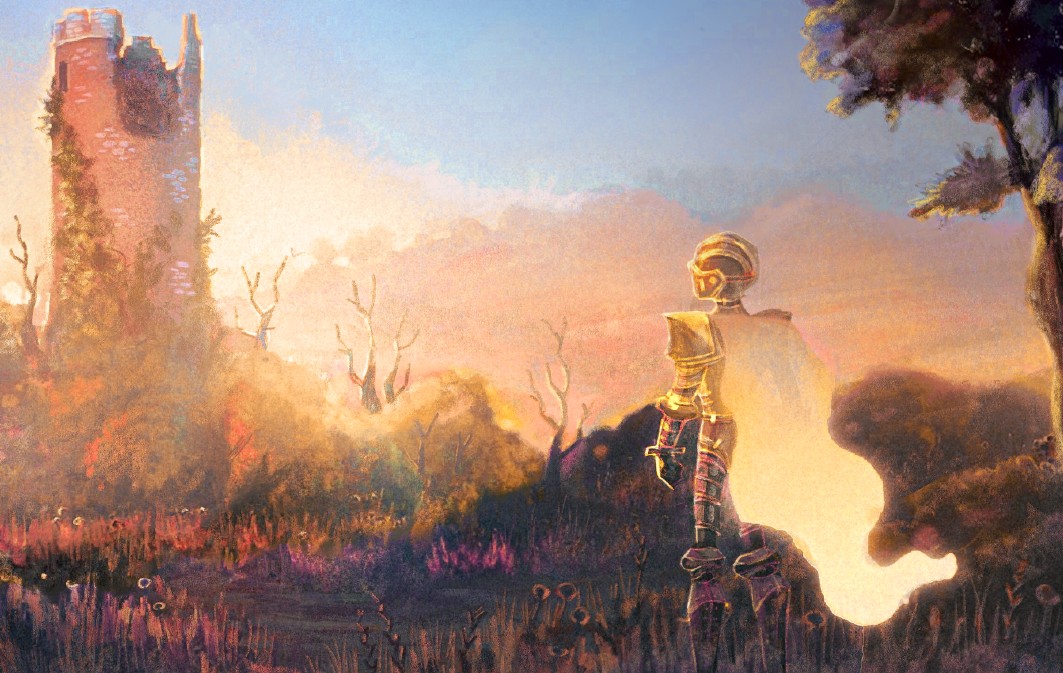
By combining a pencil texture with the idea of a grid, we wanted to create a unique line by using coloured shadows and the almost total disappearance of the colour black on the screen.
We were then able to work with colour strokes identical to the basic design, to give the textures more dimension.
Our biggest influences were Impressionist painters like Monet and Renoir. We studied colour, both in light and shadow, as well as perspective and grids.
In addition to these influences, we drew on the world of comic books with Cyril Pedrosa, video games with Dordogne and his watercolour rendering, and the cinema with Spider-Man: Across the Spider-Verse, and more particularly the universe created for the character of Gwen Stacy.
What were the main technical difficulties encountered?
First of all, we had to think about how to represent light-reflecting materials such as glass and metal using our graphic style. Metal is the main component of our characters, so this was the first textural research we did in 3D.
In the script, we took on what would later become several major technical challenges, such as the FX involved in the loss/disappearance of armour for our characters and the length of the sequence shot of the journey. During production, we discovered that the texture of our sets created disturbing visual effects during 3D camera movements.
Our protagonist’s cape was also a challenge, because we wanted it to be flat on the final image, so the animation had to provide legible and expressive shapes.
Our final problem was creating the flames with dynamic intent, the dilemma being whether to create them in 2D or 3D.

What helped you to overcome these difficulties, and what tools did you use to do so?
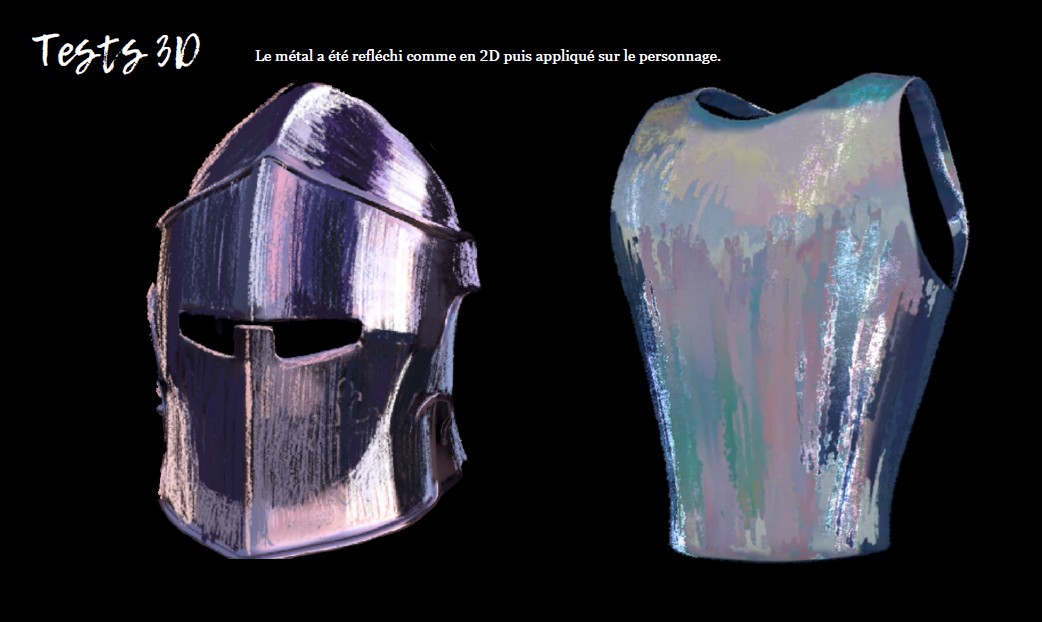
For the light-reflecting textures, we’ve done a lot of work developing the shading and compositing pipeline, with the majority of textures made using procedural nodes, or by hand-painting the maps on Mari or Substance Painter.
A great deal of research into animatics enabled us to save on the use of FX by reducing them to one shot, and the sequence shot of the journey was shortened while retaining good dynamics.
For image rendering problems, we developed a 2D camera rig in Maya using the same principle as the multiplane camera in 2D animation. This means that we have a 3D set for depth and 2D movement (limiting camera movements to panning), all with the relevant parallax.
The cape, meanwhile, was modelled in the form of a tube and animated according to its silhouette as seen from the camera, as might be done in 2D animation.
Then there was a lot of drawing over the final image to touch up certain poses and give the cape a vibrant effect.
As our film tends towards a 2D artistic direction, we pushed the cursors and the fire was animated entirely in 2D on Procreate and Animate.
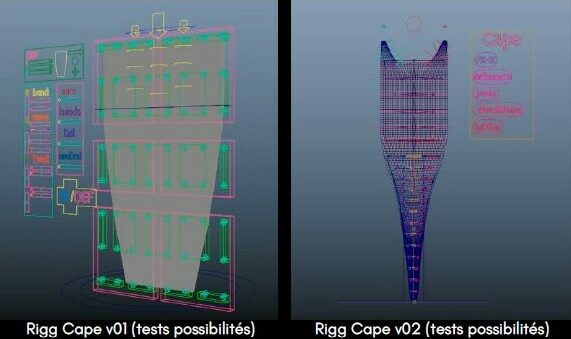
How did you go about allocating roles and working as a team?
At the start of pre-production, we didn’t really have a designated role. We threw ourselves wholeheartedly into the research without thinking about structuring the work. After wandering around and amassing a lot of research, we ended up each having our own role in pre-production and then in production.
Despite the fact that our profiles were generalist in terms of rendering and animation, we were able to identify referents by work area. While the allocation proved easy, things were more complicated in terms of teamwork.
Each had different expectations for the film, and it was difficult for our group to agree on the quality of the work expected, as well as the final look.
This may have led several people to overwork themselves by unbalancing the workload. The desire to satisfy everyone and raise the project to a certain standard led to difficult discussions which slowed down the development of the film. We wanted to adapt to the particularities of each member of the group, and these measures were more or less conclusive, but we were always looking to improve our working relationships.
What enabled you to bring this project to fruition?
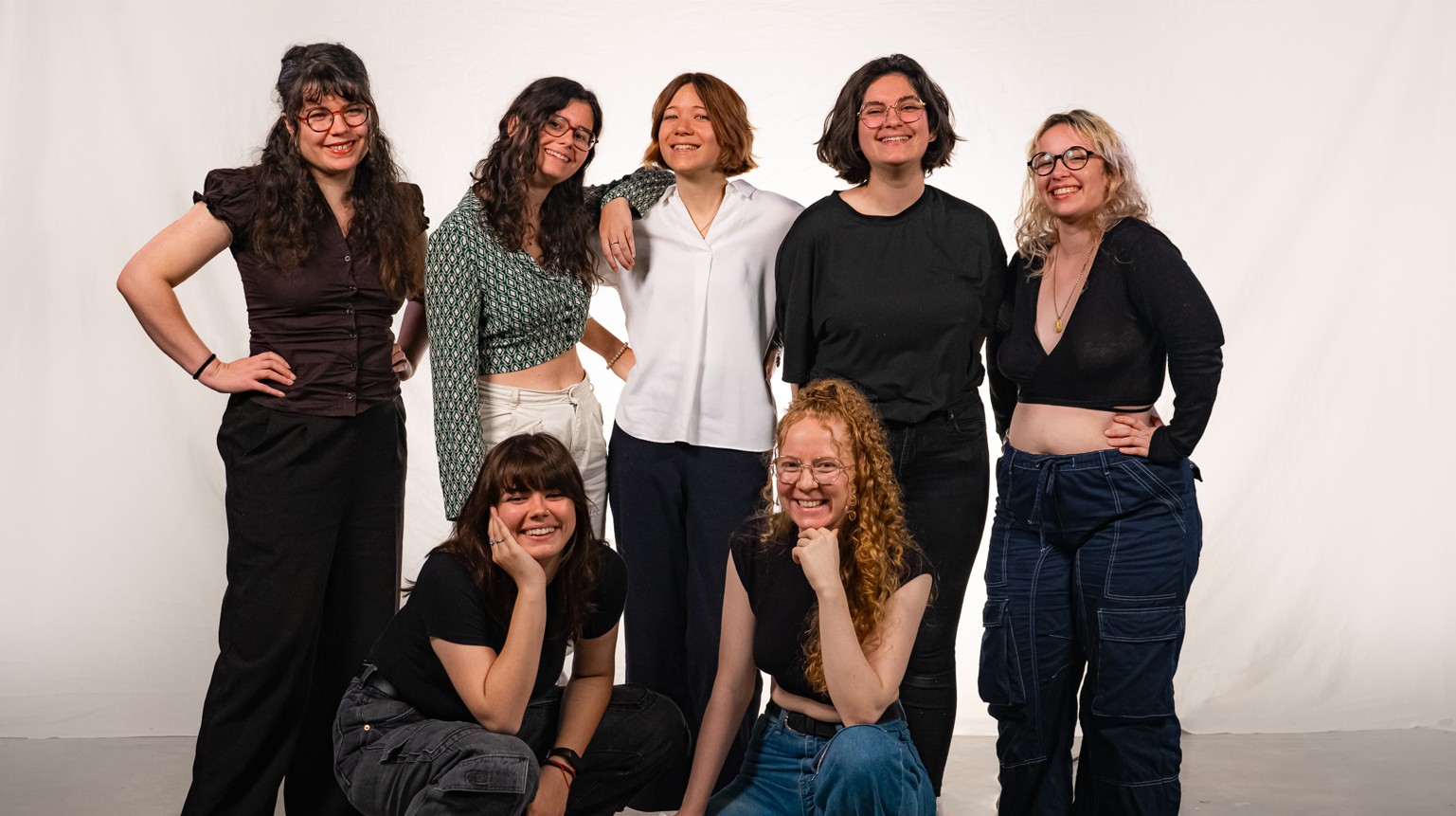
The overall understanding of the group, as well as the friendships already present and those that have emerged. These relationships gave us the opportunity to discuss more intimately some of the issues that had been bothering us.
Choosing an organiser was also crucial to the success of the production, something that took us a long time to implement.
Fanon, who was responsible for managing the deadlines for the rest of the year, visited each person and discussed with them how best to adapt the schedule to each person’s abilities, taking into account the work needed for production.
Managing everyone’s schedules wasn’t easy, but it enabled the team to move forward at a good pace and with an awareness of the time constraints.
What are you most proud of today when you revisit this project?
We’re very proud of the universe we’ve created, and we think the film is beautiful and original, both in its story and visually.
We managed to get off the beaten track and try out something that we’ll probably never be able to do once we’re in the working world. The film is just like the team, full of emotion and colour!
Looking back, what stood out for you during this process?
Even so, we were struck by the negative moments in the production, such as the meetings to sort things out that got out of hand, or the unspoken words that ended up exploding. These moments are part of every production and we wanted to talk about them!
On a more positive note, there were the uncontrollable laughs during the last few weeks of production, when fatigue was at its peak.
The final test screening at the Nantes cinema was just as memorable, and it’s great to see the culmination of a year’s work on the big screen!
What advice would you give to students making films today?
Respect each other and accept that it’s a group effort, you’re not always right and you won’t often agree with each other. Learn to make concessions and, above all, be aware that the world isn’t going to stop turning because a shot isn’t perfect or a line of dialogue could be better.
There’s no point in ruining your mental and physical health over it! You’ve got the chance to make a film, it’s your last year of study, put things into perspective and make the most of it!
By combining their technical skills with a variety of influences, while demonstrating great creativity, the team of this Chevalier cape nuage showed all the richness that a training course combining theory and practice such as the one at ESMA can bring.
A film that deserves to be rediscovered in the light of these illuminating behind-the-scenes images.
Discover the film Le Chevalier Cape Nuage, available in its entirety on the ESMA Movies YouTube channel:
